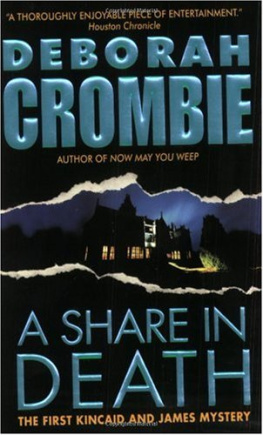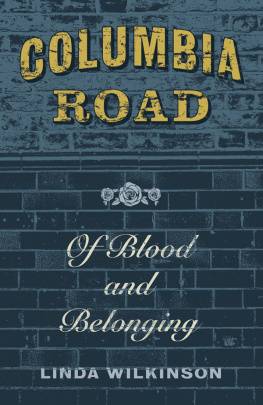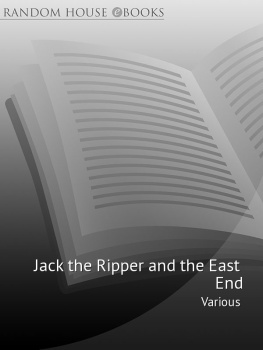
Deborah Crombie
Necessary as Blood
In this dazzling addition to Deborah Crombie's acclaimed mystery series, a disappearance, a murder, and a child in danger lead Scotland Yard detectives Gemma James and Duncan Kincaid into London's legendary East End a neighborhood where the rich and the poor, the ambitious and the dangerous, collide to solve one of the most challenging and disturbing cases they've ever faced
Necessary as Blood
Once the haunt of Jack the Ripper, London's East End is a vibrant mix of history and the avant-garde, a place where elegant Georgian town houses exist side by side with colorful street markets and the hippest clubs. But here races and cultures still clash, and the trendy galleries and glamorous nightlife of Whitechapel disguise a violent and seedy underside, where unthinkable crimes bring terror to the innocent.
On a beautiful Sunday afternoon in mid May, a young mother, Sandra Gilles, leaves her daughter with a friend at the Columbia Road Flower Market and disappears. Shortly thereafter, her husband, a Pakistani lawyer, is killed. Scotland Yard detective Gemma James happens upon the scene in time to witness the investigator making a mistake.
When Duncan and his trusted sergeant, Doug Cullen, see Gemma's name in the report, they decide to take the case. Working together again, Gemma, Duncan, Doug, and Melody Talbot must solve it before the murderer can get his hands on the real prize, Naz and Sandra's daughter.
But just as the case grows more dangerous, a personal issue threatens to throw Gemma and Duncan off the trail. In the end, it is up to them to stop a vicious killer and protect the child whose fate hangs in the balance.
Book 13 in the Duncan Kincaid / Gemma James series, 2009
Umbra Sumus-We are shadows.
Inscription on the sundial of the Huguenot church, now the Jamme Masjid mosque, on Brick Lane
That Sunday began like any ordinary Sunday, except that Naz, Sandras husband, had gone in to work for a few hours at his law office, an unusual breach of family protocol for him.
Having pushed aside her initial irritation, Sandra had decided to use the time for one of her own projects, and after breakfast and chores she and Charlotte had gone up to her studio on the top floor of the house.
After two hours work, Sandra stepped back, frowning, from the swatches of fabric she had pinned to the muslin stretched over the work frame in her studio. The carefully shaped pieces of material overlapped, forming a kaleidoscope of images, so that at first the whole appeared abstract, but on closer inspection, shapes appeared:streets, buildings, people, birds, other animals, flowers-all representing in some way the history and culture of Sandras particular part of London, the East End, in and around Brick Lane.
Sandras love affair with fabrics had begun as child, with the acquisition of a tattered quilt from a market stall on Brick Lane. She and her gran had pored over it, marveling at the intricacy of the pattern, wondering which bits had come from an Auntie Marys best pinny, which from a little girls Sunday dress, which from an Uncle Georges cast-off pajamas.
That passion had survived art college, and the pressure to join the vogue for shock art. She had learned to draw and to paint, and gradually shed translated those skills into what she still thought of as painting with fabric. But unlike paint, fabric was tactile and three-dimensional, and the work fascinated her as much now as it had done when she had haltingly composed her very first piece.
Today, however, something wasnt quite right. The piece wasnt generating the emotional impact she wanted, and she couldnt quite work out what was wrong. She moved a color here, a shape there, stepped back for a different perspective and frowned again. The dark brick of Georgian town houses formed a frame for a cascade of color-it might have been Fournier Street, or Fashion Street, with the women parading in their gowns, intricately worked iron cages held high in their hands. The wire cages held, however, not birds, but women and childrens faces, dark to light, a few framed by the hijab.
Late-morning sun poured through the great windows in the loft-a blessing for the warmth in midwinter if not in mid-May-but it was the clarity of the light that had drawn her to the place, and still, even when the work wasnt going well, had the power to hold her transfixed.
She and Naz had bought the Fournier Street house more than a decade ago, when they were first married, disregarding rising damp, crumbling plaster, and minimal plumbing, because Sandra had seen the potential of the studio space. And it had been affordable on Nazs solicitors earnings while Sandra was still in art school. They had worked hard, making many of the repairs themselves, to create their vision of a home, not realizing that in a few years time they would be sitting on a property gold mine.
For the town houses on Fournier Street were Georgian, built by the French Huguenot silk weavers who had come to Londons Spitalfields to escape persecution in Catholic France. The weavers had done well for themselves for a time, their looms clicking in their spacious lofts, the women congregating on the front stoops in their lustrous taffeta gowns, while their canaries sang in the cages they carried as marks of status.
But cheap calico imports from India had threatened the weavers livelihood, and the invention of the mechanized loom had sounded its death knell. New waves of immigrants had followed the Huguenots-the Jews, the Irish, the Bangladeshis, the Somalis-but none had prospered as the Huguenots had done, and the houses had sunk into a long, slow decay.
Until now. Despite the recession, the City was moving relentlessly eastwards, encroaching on Spitalfields, bringing a new wave of immigrants. But these were yuppies with fat pocketbooks who were snapping up the houses and warehouses of the old East End, pushing the lower-income residents out as they came in. For the present bled into the past, and the past into the present, always, and to Sandra it seemed particularly so in the East End, where the years accumulated in layers like the fabrics on her board.
Sandra sighed and rubbed her fingers over the scrap of peacock-blue taffeta she held in her hand, contemplating its position in the overall design of her collage. It was inevitable, she supposed, change, and she had friends now on both sides of the economic divide-and if anything, she owed her ability to make her living as an artist to those on the upper end of the scale.
She glanced at the pile of fabric scraps under the loft casement. Charlotte lay nestled among the silks and voiles, drawn like a cat tothe pool of sunlight. She had settled there when she tired of a long and one-sided conversation with her favorite stuffed elephant-Charlotte, like her mother before her, would have nothing to do with dolls.
Graceful as a cat, too, her little daughter, even asleep with her thumb in her mouth, thought Sandra. At almost three, Charlotte had held on to her thumb sucking a bit too long, but Sandra found herself reluctant to deprive her precocious child of a last vestige of infant comfort.
Her frustration with the collage-in-progress momentarily forgotten, Sandra grabbed a sketchbook and pencil from her worktable. Quickly, she blocked out the spill of fabric, the small French panes of the casement, the curve of Charlottes small body in dungarees and T-shirt, the delicate and slightly snub-nosed face framed by the mass of toffee-colored curls.
Next page





